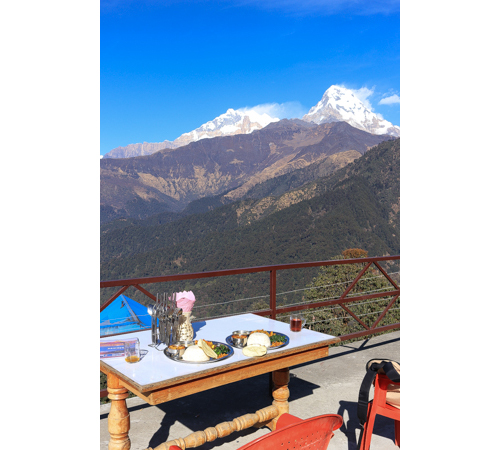
Do you think that multiple-day trekking means compromising on food and that energy-bars are your only buddy that you can rely on? That’s not the case in Nepal. Trekking has been a big thing for the country, which has led the industry to make every effort to create comfortable conditions for trekkers in many aspects, such as well-maintained trails, being able to hire a reliable porter easily, etc. And food is another such thing. In fact, despite carrying several energy-bars in our backpacks, we ended up not touching them. If you like local dishes and you’re OK with spicy food, you’ll definitely enjoy decent local cuisine during the hike in Annapurna!
You can expect at least the basic-level dishes that you would have in town.
A basic of Nepali dish is Dal-Bhat-Talkari in town, and it’s the same when you go hiking. In short, it’s a traditional meal in Nepal (along with India and Bangladesh), usually comprises rice, lentil soup called dal, vegetable or meat curry and spicy pickles. You’ll find it at almost all restaurants or cafes on trekking routes.
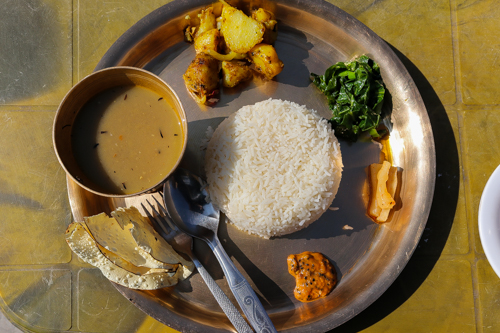
Another basic dish in Nepal is momo, which was available for dinner at both of the lodges we stayed at. When we ordered momo, a sister in the kitchen looked so happy to serve her specialty dish.
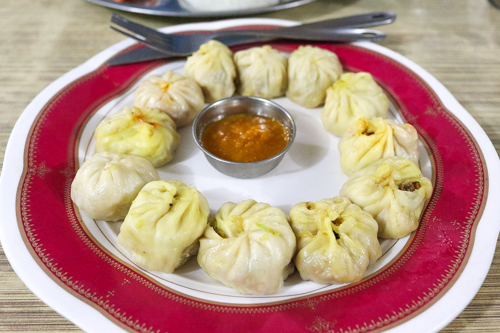
Even a choice of Tibetan-style breakfast is available. The fluffy fried dough charged up our energy levels in the morning!
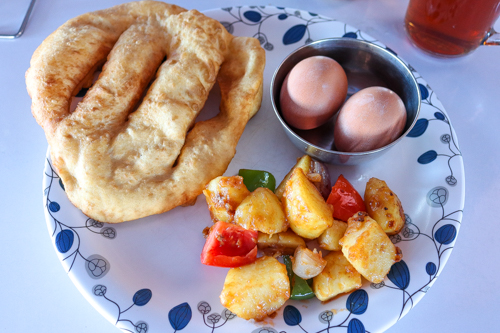
After you’ve been in Nepal for a while, you’ll be familiar with the country’s signature rum – Khukri XXX Rum. While in the city it’s best enjoyed with cold Coke, it goes well with hot water during the freezing night in the mountains, warming up your body!
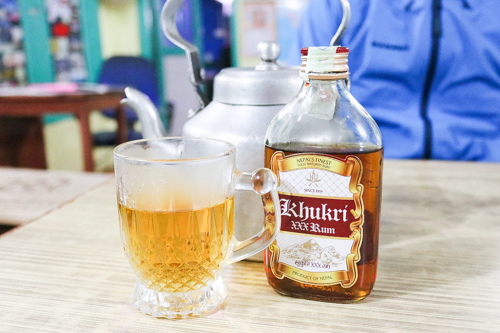
What’s something beyond your expectation?
Dal-Bhat-Talkari is different and special at every restaurant – whether it’s for the spices in the curry at one restaurant, or be it a special pickle at other restaurant. And that’s the case on the Annapurna trail too. First, spinach in this region is so special. It has a strong taste, bitter and crunchy. We really loved it every time it was served during the hike.
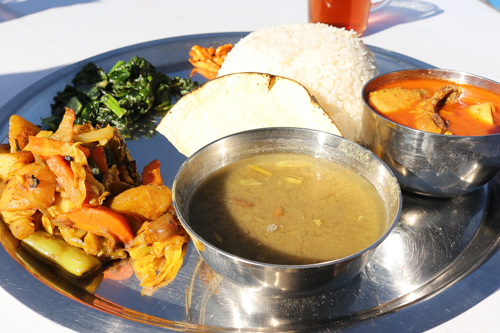
Second, the pickle served at Ghorepani was super awesome. Based on dried radish, its crunch were just great!
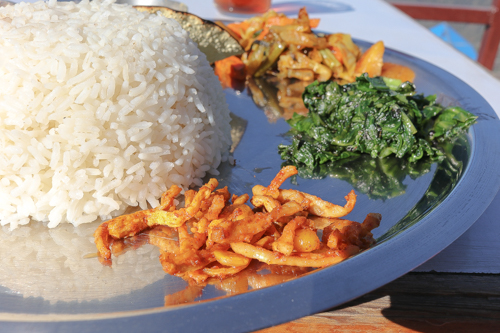
At Ghorepani, we felt tempted to order “apple pie” and it was served like this. It was huge!! While it certainly looked different from what we expect as apple pie, the essentials were the same – tasty apple with cinnamon, crispy pie dough, and rich custard creme. We – our guide, the porter, and two of us, enjoyed this huge pie together.
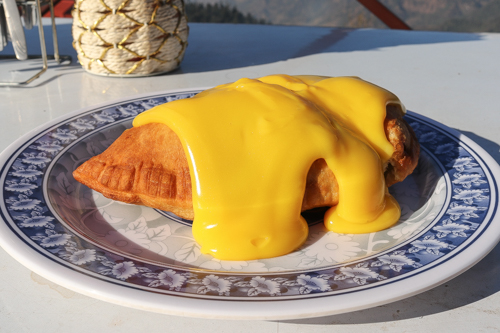
The last meal in the village… was super awesome!
Lastly, our guide made the 3-day hike extra special with a very authentic lunch on the last day. We ordered the standard Dal-Bhat-Talkari, but something very special was the dhido (dhindo), which is served instead of rice or chapati. During the trekking, I had told the guide how much I liked dhido when I worked in Kathmandu in my 20s. It’s a sticky loaf made of buckwheat (often the only thing available where rice either won’t grow or is unaffordable). He remembered our chat and called the restaurant to prepare it in advance!
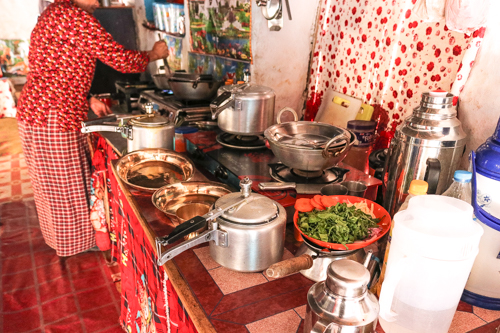
This is the Dal-Bhat-Talkari at the restaurant, with the dhido on the left side of the plate!
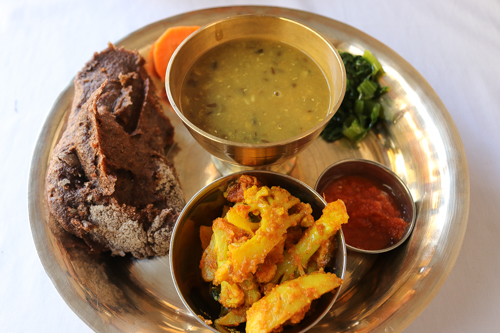
It’s eaten like chapati – broken into bite-sized pieces using your fingers and eaten with curry or dal soup. The more you bite, the more the strong taste of millet comes out! This was the most memorable and tasty Dal-Bhat that we had during the 3-day hike.
